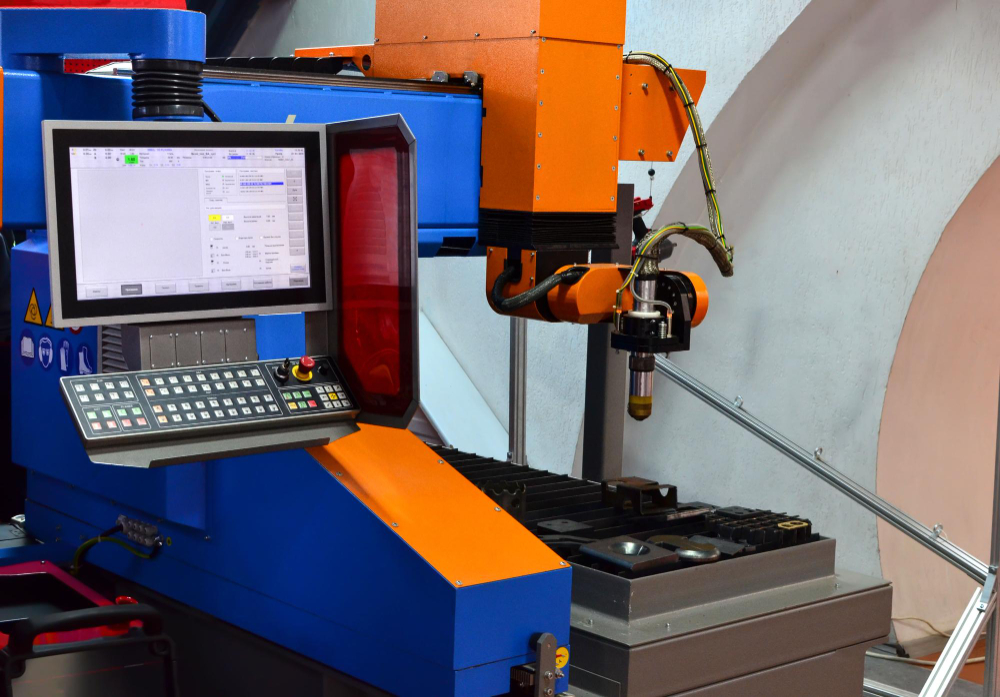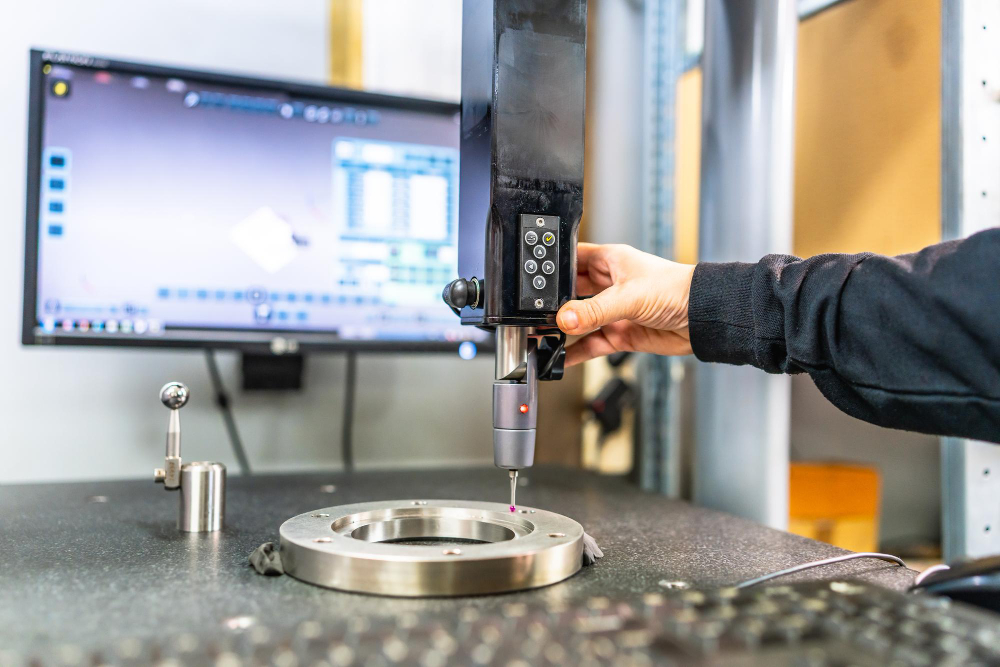Walk into any modern factory today, and you’ll hear the rhythmic hum of precision at work. In a world demanding higher quality, faster turnaround, and greater sustainability, Computer Numerical Control (CNC) machining has evolved from simple automated cutting to become the silent force enabling industries to meet and exceed these expectations.
Whether you’re building aircraft components or crafting custom furniture, CNC technology is transforming how we make things—and the competitive advantages are game-changing.
What’s Driving CNC Innovation in 2025?
The manufacturing landscape has shifted dramatically, with several key developments pushing
CNC technology into new territories of capability and efficiency.
Smarter Operations Through Data Integration
Today’s CNC machines don’t operate in isolation. Connected through IoT sensors and powered by AI-driven analytics, they provide real-time insights into performance, efficiency, and maintenance needs. This connectivity allows manufacturers to spot potential issues before they become costly downtime, optimize production schedules, and maintain consistent quality across entire product lines.
The impact is substantial: predictive maintenance can reduce unplanned downtime by up to
50%, while real-time optimization typically improves overall equipment effectiveness by 15-25%.
Advanced Multi-Axis Capabilities
While traditional 3-axis machines (moving along X, Y, and Z coordinates) remain essential, the
industry is rapidly adopting 5-axis and even more complex systems. These advanced machines
can approach a workpiece from multiple angles simultaneously, creating intricate geometries in
a single setup.
Think of machining a complex aerospace component like a turbine blade, where its
aerodynamic curves and intricate internal channels demand access from every conceivable
angle. What once required multiple operations, fixtures, and manual repositioning can now be
completed in one continuous process.
This ”one-and-done” approach delivers more than speed—it eliminates potential errors between operations and achieves unprecedented precision, making it possible to manufacture components that were previously impossible or prohibitively expensive.
Sustainable Manufacturing Practices

Advanced software optimizes material usage, reducing waste significantly. Innovations like
Minimal Quantity Lubrication (MQL) systems replace traditional flood coolants with precise oil
misting, achieving up to 95% reduction in coolant usage while creating cleaner work
environments.
The precision inherent in CNC machining also enables effective use of recycled materials—by
precisely working with recycled polymers or metals to create new, high-value products,
supporting circular economy principles without compromising quality.
What Makes a Superior CNC Router
Understanding the key components that separate exceptional machines from ordinary ones
reveals why some manufacturers achieve superior results while others struggle with
consistency.
Foundation: Rock-Solid Construction

The foundation of any high-performance CNC router is its frame. Heavy-duty, welded steel
construction provides the stability needed to absorb cutting vibrations and maintain accuracy
over time. This isn’t just about durability—it’s about precision. A machine that flexes or vibrates during operation simply cannot deliver consistent results.
Machines that exemplify these engineering principles, such as the Tekcel Enduro series from
Tommotek designed and built in Australia, demonstrate how proper construction ensures
performance remains as precise on day 1,000 as it was on day one.
Precision Drive Systems
engineering. Recirculating ball screws represent the gold standard, translating rotational motion into linear movement with minimal backlash and maximum repeatability—typically achieving positioning accuracy within 0.025mm.
These precision drives work in concert with high-performance spindles—often Italian-made HSD units capable of reaching 24,000 RPM. This combination of accuracy and speed enables clean finishes across materials ranging from delicate acrylics to tough aluminum alloys.
Intelligent Tool Management
In production environments, efficiency means minimizing downtime. Automatic tool changers
eliminate minutes of manual tool changes per job, allowing machines to swap between different
cutting tools in seconds without operator intervention. Modern systems can manage dozens of
tools, transforming complex multi-process jobs into set and forget operations.
READ MORE Most Popular Company Office Designs Around the World
This versatility extends through advanced accessories like oscillating knives for flexible
materials or camera registration systems for precise print-and-cut workflows, making a single
machine capable of handling diverse production requirements with surgical precision.
Why Local Expertise Matters
Beyond the machine itself, the long-term value of a CNC investment often hinges on the quality
of partnership. This is where specialized local manufacturers, distinct from equipment importers, offer significant advantages in an industry where downtime costs can exceed $50,000 per hour in high-volume operations.
Companies that design and build both hardware and software in-house possess comprehensive
product knowledge that translates into superior training programs and expert support. Consider the difference between calling overseas technical support for a complex issue versus having local engineers who understand every component and can provide immediate, hands-on
assistance.
Tommotek in Perth, WA, exemplifies this approach developing proprietary Tekmov control
systems alongside their machines, ensuring customers receive end-to-end expertise that
maximizes investment returns and minimizes learning curves.
Real-World Applications – How CNC is Transforming Industries
The true measure of CNC technology lies in its practical impact across diverse manufacturing
sectors, where the right machine configuration can revolutionize productivity.
Cabinet Making and High-Volume Woodworking
Speed and repeatability define success in this sector, where margins depend on efficient
material usage and consistent quality across thousands of units. Purpose-built features like 9-
position multibore drill heads drill all required holes for shelving, dowels, and hardware in a
single pass a task requiring numerous tool changes and significantly more time on standard
routers.
Combined with automated loading and unloading systems for materials ranging from solid
timber to MDF and laminates, these machines form the heart of highly efficient production cells, often increasing throughput by 200-300% while maintaining consistent quality.
Engineering and Prototyping
Large, complex parts requiring extreme precision demand different capabilities. High-gantry
machines with up to 500mm of clearance accommodate substantial material blocks for creating
casting molds, machining bulky aluminum extrusions, or fabricating large-scale components for
aerospace, automotive, and marine applications.
The ability to machine complex geometries in single setups has revolutionized prototyping
timelines, reducing development cycles from weeks to days while maintaining the precision
required for functional testing.
Signmaking and Fabrication
Versatility becomes crucial when a single machine must expertly handle diverse materials and
deliver both functional performance and aesthetic excellence. Advanced CNC routers excel at
creating clean edges, perfect alignment, and intricate details that define high-quality signage
and architectural elements.
Configuration options like pumped coolant atomizers for metalwork and advanced dust
extraction for timber and plastics allow machines to excel across demanding applications while
maintaining optimal operating conditions and superior surface finishes.
Looking Forward: The Future of Precision Manufacturing
CNC machining has evolved into an indispensable manufacturing cornerstone where intelligent
software, robust engineering, and application-specific design converge. As connectivity
improves, sustainability focus intensifies, and precision requirements continue climbing,
innovation opportunities will expand into exciting territories like robotic integration, AI-driven
design optimization, and additive manufacturing convergence.
The global CNC market, projected to grow by 7.1% annually through 2030, reflects industry-
wide recognition that precision manufacturing isn’t just about making parts—it’s about creating competitive advantages that define market leaders.
For businesses seeking to capitalize on these opportunities, the question isn’t whether to
embrace advanced CNC technology, but how quickly they can implement it to stay ahead of the
curve. Those who act decisively will find themselves equipped not just to meet current
demands, but to shape the future of their industries.
To explore how these advancements can specifically transform your manufacturing operations,
consider connecting with specialists who understand both the technology and its practical
applications.
Ready to unlock the full potential of your manufacturing operations? Contact CNC
specialists today to discover how advanced machining solutions can drive unparalleled
precision, productivity, and profitability for your business. The future of manufacturing precision starts with the right partnership.


